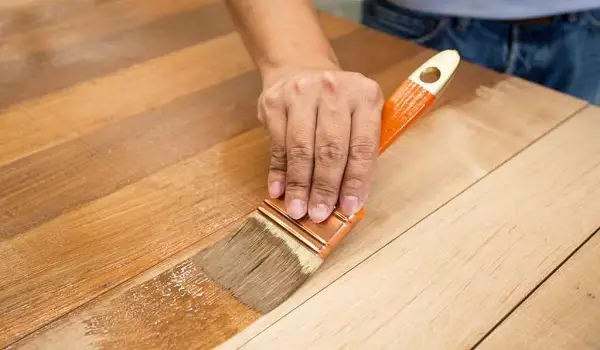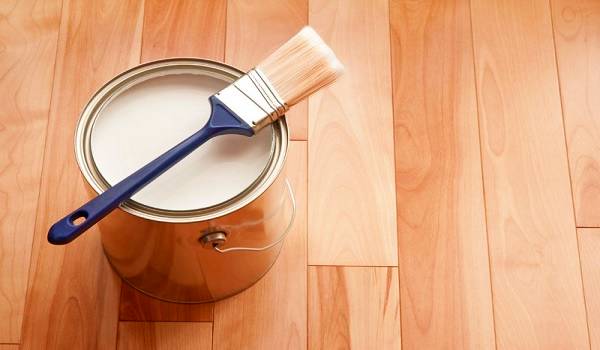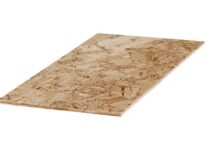As a seasoned craftsman, I’ve witnessed the enduring beauty of wood in countless applications, from crafting exquisite furniture to restoring aged cabinets.
To truly unlock the timeless allure of wood, mastering the art of wood polishing is paramount.
In this comprehensive guide, I’ll share my first-hand experience, delving into the world of wood polishing, its profound significance, the array of benefits it offers, and the intricate steps that can elevate your woodworking projects to the next level.
What is Wood Polishing?

Wood polishing is not just a process; it’s an art form that breathes new life into wood surfaces.
It involves enhancing the appearance and durability of wood by applying specific materials to achieve a glossy, smooth, and protective finish.
Through years of working with wood, I’ve come to appreciate how this process not only reveals the wood’s innate beauty but also forms a formidable shield against the ravages of time, dust, and moisture.
Why is Wood Polishing Important?
Wood is a living material that can lose its charm over time, marred by wear, tear, and the accumulation of life’s daily experiences.
Wood polishing acts as a rejuvenating elixir, erasing imperfections and restoring the wood’s original luster.
Beyond aesthetics, it fortifies the wood, prolonging its lifespan and ensuring it stands the test of time.
Benefits of Wood Polishing
Through my extensive experience, I’ve witnessed the multitude of advantages that wood polishing bestows:
- Enhanced Aesthetics: Polished wood possesses a captivating, high-gloss appearance that elevates the overall appeal of your creations, be it furniture, floors, or cabinets.
- Increased Durability: The protective finish, carefully applied during wood polishing, acts as an unyielding shield, safeguarding the wood against scratches, stains, and moisture.
- Longevity: Meticulously polished wood can retain its splendor and structural integrity for generations, a testament to its enduring quality.
- Improved Hygiene: The smooth, sealed surface not only enhances the wood’s beauty but also simplifies cleaning and maintenance, fostering a healthier environment.
Now that I’ve shared the profound importance of wood polishing, let’s delve into the hands-on process.
Read Alos: Best Sealer Wood
How to Polish Wood

Step 1: Prepare the Wood Surface
Before embarking on the journey of wood polishing, meticulous preparation of the wood surface is paramount.
Begin by ridding it of any dirt, dust, or remnants of past finishes that may have accrued over time.
My preferred method is to clean the surface with a gentle wood cleaner or a mixture of mild soap and water.
Employ a soft cloth or sponge to ensure the wood is treated with the utmost care. It’s imperative to wait until the wood is entirely dry before proceeding to the next step.
Step 2: Choose the Right Polishing Materials
Selecting the appropriate polishing materials is where my years of experience come into play.
The multitude of options, from waxes and varnishes to oils and polishes, can be overwhelming.
Factors such as the wood type and the desired finish should guide your selection.
For those aiming for a natural, matte finish, I recommend oil-based products like linseed oil. If you seek a captivating gloss, high-quality wood polish should be your choice.
Step 3: Apply the Polishing Material
The application method is crucial and varies depending on the chosen polishing material.
When working with oils and waxes, I always use a clean, lint-free cloth to apply a consistent layer.
If you opt for a wood polish, adhering to the manufacturer’s instructions is paramount. Remember to apply the material in alignment with the wood grain to ensure an even and harmonious finish.
Step 4: Buff the Wood
After applying the polishing material, the next step is to buff the wood to perfection.
I employ a clean, dry cloth for this task or a buffing machine if available.
The aim here is twofold: to eliminate any excess material and to create a surface that gleams with a captivating shine. Circular motions during buffing work wonders, ensuring a professional-grade finish.
Step 5: Apply a Protective Finish (Optional)
While optional, applying a protective finish is a wise choice, one that has preserved my woodwork masterpieces over the years.
Products like polyurethane offer an additional layer of defense against the rigors of daily life, making them particularly suitable for high-traffic areas.
Conclusion
In summary, wood polishing is a craft that not only enhances the beauty of wood surfaces but also bestows upon them the gift of longevity.
With the guidance and insights shared in this guide, you are now equipped to achieve professional-level results. Here are some sage tips gathered from my extensive experience:
- Regular maintenance is the key to preserving your wood’s timeless allure.
- Always select the appropriate polishing material tailored to your specific wood type and desired finish.
- When uncertain, begin with a small, inconspicuous area to gauge the results.
- Prioritize safety, especially when dealing with chemicals, and employ suitable protective gear.
For further, in-depth knowledge on wood polishing techniques, tools, safety precautions, and specific wood polishing projects (furniture, floors, cabinets, tables, chairs), delve into our wealth of resources.
Master the art of wood polishing, and witness your woodwork shine with enduring elegance and protection.


